Are you looking for the best natural minimalist hair care routine to fit your needs? Are you hoping to reduce or completely eliminate waste in your hair care routine, while also protecting yourself from the dubious chemicals in most commercial shampoos? Do you want to find the least invasive way to keep your scalp clean and balanced, and your hair looking healthy and beautiful?
Perfect – read on!
Below I will start by detailing the most minimalist hair care routine, and the one I personally use – water-only hair washing. I will then follow with a rundown of the most effective low-to-zero waste hair care alternatives you can use to simplify your hair care routine.
I will divide them into hair cleansers, conditioners, and basic masks. If you want, just use the handy-dandy links below to jump directly into the different sections (it is kind of a long post).
All the minimalist hair care routine options below are low-to-zero waste and DIY. So, let’s begin!
Related content: Starting a Zero Waste Lifestyle the Simple Way!
The Most Natural and Minimalist Hair Care Routine: Water Only Hair Washing
I’ve pretty much had the same minimalist hair care routine for the last several years. Whenever I feel that my hair looks a bit greasy, I rinse it thoroughly under hot running water for a few minutes and when I’m done I do a final vinegar-water rinse. Period. That’s literally it.
I do this once, twice, or three times a week, depending on the week – physical activity, weather, how often I’ve changed pillow cases. I like to use oils and fatty creams to nourish my skin and some of it will end up on my pillows, that’s just inevitable.
My hair has never looked or felt better: it’s softer, more manageable, thicker and stronger.
I’ve written a whole blog post dedicated to water-only hair washing, if you’re curious to give it a try. It’s a guide, complete with an FAQ and troubleshooting tips, to help you transition. You usually experience more of a learning curve with water-only hair washing, but it’s definitely worth it!
My results with water-only hair washing
My hair was always kind of thick and wavy, with a tendency for frizz and dryness, as well as some oiliness at the roots.
After all these years of mostly water only washing it feels softer, healthier, and generally stronger. It is also a lot easier to mold and style – it seems to hold its shape better. This is probably due to the fact that I’m not stripping the natural oils.
Another thing I love is that there is almost no real frizziness anymore, unless I’m in a very humid environment.
Other Low-to-Zero Waste Minimalist Hair Care Routines
I have dabbled with many other things over the years just to change it up, level up, and just have a little more fun with my minimalist hair care routine. I’ve always loved potions and lotions, “eye-of-newt-and-toe-of-frog, wool-of-bat-and-tongue-of-dog” type of thing.
I’ve tried essential oils, aloe vera, oil masks. I’ve also washed it with tea made from soapwort root and tried powdered herbs, made into a paste and scrubbed onto the scalp. I’ve applied straight French clay (as a paste and as a powder). The list goes on. Some I liked, others were a bit of a fuss.
Below I made a list of the most effective of the natural and minimalist hair care routine alternatives. I still use some of these occasionally, whenever I feel like a change or as a special treat.
Like I mentioned above, I’ve divided it into sections for easier navigation: cleansers, conditioners, and treatments.
Related content: The Best Natural Hair Loss Treatments (by Hair Loss Type)!
The Minimalist Hair Care Routine
– Hair Cleansers
1 – Dry shampoo
The concept of dry shampoo is straightforward:
- You take one or more oil-absorbing powders, sprinkle and distribute them well on your scalp and roots (you can do a little massage).
- Let that sit for a few minutes and brush it out.
- The powders soak up the excess sebum (scalp oils) and the massage helps to release the dirt particles.
What powders should you use
People use all kinds of powders, but the most popular ones are arrowroot powder, cornstarch, bentonite clay (or other fines clays), and baking soda.
The baking soda is popular in the “no-poo” community, but its high alkalinity can actually wreak havoc with your scalp – the pH is much too high – so it’s probably best to avoid it.
You can use any of them individually, or mix some or all together. You could also add a bit of cocoa powder to whatever mixture you decide on if, like me, you have dark hair.
Sometimes the powders can be a bit troublesome to brush out completely and if they’re too white, it can look like you have grey hair at the root.
I’ve never tried Bentonite clay specifically, but the fine green clay I did try was a total mess to clean out of my hair, so I didn’t do that twice!
Best suited for: thinner and straighter hair types, since it can be tricky to get all of the powder out of thicker or curlier hair.
2 – Shampoo Bars
I’m not a big fan of shampoo bars these days, mainly because it’s soap anyway, albeit fattier and milder in general.
Although some soaps can be mild on the skin and not as drying as other soaps, I still have a big problem with the concept of a soap as “moisturizing” to the skin or hair, since by definition it strips the oils along with the dirt.
That being said, if you don’t want to go full “commando” with your minimalist hair care routine, or you just want to detox all the chemicals and crap that’s in regular commercial shampoo formulas, natural shampoo bars are an excellent alternative.
What to look for
Popular ingredients in shampoo bars are apple cider vinegar, beer, and castor oil – but there are literary dozens of creative formulations you could try.
They can be a bit pricey, so it’s definitely the kind of thing that pays to learn how to make yourself. It’s relatively easy to master a basic recipe and there are a ton of them online for all kinds of DIY comfort levels.
Best suited for: absolutely all hair types – just a matter of finding a formula you like.
3 – Soapnuts & Soapwort
When I was volunteering in Sweden, I was helping out a woman with her natural organic skincare line. It was there that I first came into contact with soapwort.
This herb exists all over Europe and much of North America. I had heard the name before, but I hadn’t paid much attention to it. There it was all over the property and because my host wanted to revamp a whole section of her garden, she was digging out a lot of these roots to make space. She showed me how to use it to wash your hair.
How to use it
You simply make a tea from it:
- Cut the root into small pieces and add them to 2 or 3 cups of water.
- Simmer for a few minutes, adding a little vinegar to help extract more of the natural saponins.
- Let it cool off or stand overnight.
- Strain the roots and use a fork or whisk to stir up some bubbles.
Use that tea to wash your hair and rinse with water, as you would shampoo.
It foams up quite well when you shake it or whisk it. It leaves the hair feeling soft and light, without the more squeaky clean, drying effect of full on soap.
If you’re looking for a middle ground between soaps and non-foaming cleansers, this is a good option.
If you don’t have easy access to soapwort you can use soapnuts (otherwise known as Econuts), which are readily available as laundry detergent. It’s pretty much the same thing. They’re both plants with naturally occurring saponins that produce a cleansing foam when shaken in a water solution.
You can use it to wash everything in fact, from hair and body, to clothes and dishes.
Best suited for: all hair types. Excellent for people who want to make a slower and easier transition to non-foaming cleansers.
4 – Herbal pastes
Another cool thing I had the opportunity to try in Sweden were shampoo pastes made from mostly Ayurvedic herb powders.
One of the products my host sold were her own herbal preparations for cleansing the hair. She had one for normal hair and one for colored/damaged hair.
Each had several ingredients so I won’t attempt to remember them all here, but both contained Cassi (or neutral henna, for hair strength and volume), Amla powder (high in vit C), Sidr (another herb high in saponin), and licorice root (which is hydrating and calming).
The preparation for normal hair had a basis of Fuller’s Earth (which is detoxifying and absorbing) and Reetha (another saponin). The mix for colored/damaged hair had Shikakai (also a saponin). There was even some nettle powder in there for strengthening and sebum regulation.
How to use it
To use this type of powders in your minimalist hair care routine, you basically:
- take 2 or 3 teaspoons of it and mix with enough water to make a paste.
- then you scrub it all over your scalp for up to a minute, wait a few minutes and rinse off well with water.
You can get as complicated as you want mixing your powders or you can use a few of the more readily available ones, like simple Amla (conditioning) and neutral henna (strengthening), and mix them with a saponin, like Shikakai, Sidr, or soapwort for a more cleansing effect.
There are many Ayurveda “shampoo” recipes online you can flip through, if you find it interesting and you want to go deeper.
Likewise, if your hair is on the oily side you can simply get some fine clay and make a paste to apply to your scalp. Just make sure you rinse thoroughly, otherwise the leftover paste can make your hair feel a bit matted at the roots once it dries.
Best suited for: powder combinations can be adapted to any hair type.
Great if you still use commercial styling products in your hair, as the scrubbing action will remove the buildup on your scalp.
Also wonderful as an occasional scalp treatment, helping to remove dead skin cells and activate circulation (additional oxygen and nutrients to the roots).
Related content: Here Are 3 Simple & Effective DIY Natural Scalp Scrubs
The Minimalist Hair Care Routine
– Hair Conditioners
1 – ACV and other vinegars
When it comes to a natural minimalist hair care routine, vinegar and water mixes are just about the best thing to have on hand. They are literally the one constant in my hair care routine since I first started to clean out my beauty regime almost 20 years ago.
They’re the one thing everyone can benefit from, whether you’re some form of “no-poo”, you’re using more natural shampoos, or commercial ones.
In fact, my grandmother told me once that vinegar is what they used to use back in the day for hair care.
Vinegar-water rinses are highly beneficial as leave-in conditioners and scalp treatments. This is true whether or not you have a minimalist hair care routine for three basic reasons:
- If you’re using soaps or shampoos, it will help bring the pH of your scalp down to a more acidic level, as well as help remove any remaining debris left over by the products you’re using in your routine.
- It will soften the water you’re showering with, which can be very drying to your hair if you live in an area with hard water. This means water with a high mineral content (mostly calcium and magnesium) that builds up and can give the hair a dull look and a coarse feel.
- The antimicrobial properties of the vinegar (2) will help keep your scalp healthy and free of disorders, such as dandruff, psoriasis, and assorted fungi.
Which vinegar to use
I’ve used different types of vinegars in my minimalist hair care routine over the years: regular table vinegar, white wine vinegar, red wine vinegar, rice vinegar, and of course apple cider vinegar. They all have the same basic effect, but I did notice a few particularities:
- red wine vinegar has a darkening effect on your hair over time (perhaps unsurprisingly)
- white wine vinegar seemed to me to lighten it a bit
- apple cider vinegar seems to have a more “moisturizing” effect
Mind you, a higher ratio of any vinegar to water has a more “moisturizing” effect.
By this I mean mostly that it can appear shinier or more weighted down. I personally like this effect to a certain extent, because my hair tended to be unruly, dry and with lots of frizz. But a lot of people with thinner or straighter hair don’t, so it’s something to take into account.
How much vinegar to use
You can experiment with different vinegars and in different ratios until you reach the one you’re happy with.
I started with 1 part vinegar to 8 parts water, but I’ve been eyeballing it for a long time now and found that a higher vinegar ratio definitely works better for me.
As for the smell, it is strong for a couple of hours after washing, but it fades quickly. The interaction of the vinegar with your own body chemistry will also produce your very own natural clean hair smell (which I’ve always loved!).
Optional additions: Some people like to infuse their vinegar with rosemary, lavender, or chamomile for a couple of weeks to imbue it with the properties of the herbs, while producing a pleasant herbal fragrance.
Take into account that depending on the herbs you choose it might affect the color of your hair: for instance, rosemary will darken your hair and chamomile will lighten it.
Best suited for: all hair types. A vinegar-water rinse will do absolute wonders for the shine, bounce, and softness of your hair, helping to keep your scalp balanced.
2 – Brushing hair in downward strokes
Over the last few years I’ve incorporated a stimulating upside-down hairbrushing session to my minimalist hair care routine. That has not only leveled up my routine, but also makes for a highly enjoyable massage.
My hair feels so full and healthy – I give one third of the credit to this technique (other two thirds being diet and my hair washing routine).
You can read a lot online about the dangers of over-brushing your hair and how the “100 strokes a day” is an old-wives tale that does more harm than good.
I would tend to agree that over-brushing or over-stimulation of any kind would be counter productive, but that’s not to say that a good brush scalp massage doesn’t do wonders. I’ve experienced this personally.
How do you do it
Just the way it sounds – hang your head upside down and brush it from the base of the neck to the opposite end of the hairline, all the way around your head.
Do this every single morning, between 20 and 30 strokes, for about a minute or for as long as it feels nice. Trust me, at some point it starts to feel a bit tender, so you won’t overdo it.
It really helps to wake you up! Just brush it down again once you’re done, so you don’t start the day looking crazy, of course.
This works in two ways:
- it helps to spread the natural oils that are produced by the scalp down along the hair shaft
- and it increases blood flow to the scalp, bringing with it oxygen and nutrients to the hair roots, where it’s needed to help build new, healthier and stronger hair
Make sure that the brush you use can reach through to the scalp, so you feel the massage, and that it’s made of natural materials, like natural boar bristles, wood or bamboo. You don’t want to be scratching the scalp with wire or hard plastic.
Best suited for: all hair types, particularly for thicker and wavier/curlier hair as it helps the natural oils produced by the scalp to reach the full length of the hair shaft.
Related content: The Best Proven Ways to Reverse Gray Hair Naturally
The Minimalist Hair Care Routine
– Hair Treatments
1 – Oil masks
These were also one of the first things I tried in my natural minimalist hair care routine journey.
If you’re using soaps or foaming cleansers (whether natural or commercial) it’s a good idea to pair them with oil masks. It conditions the hair shaft and scalp, which is very necessary if you’re stripping its natural oils. It also helps nourish the roots to produce healthier, stronger hair.
How do you do it
The process is the same regardless of the oils you choose.
You take one or two tablespoons of oil and you can add a few drops of essential oils. Rosemary, lavender, and peppermint are good options that will boost hair growth and promote a balanced scalp.
Massage the mixture into your scalp and use whatever is left to coat the hair shaft. Let that sit for at least 30 minutes (but preferably a few hours or overnight) and wash off.
The choice of carrier oils depends on your hair type
- For thinner hair you should use lighter carrier oils – like almond, jojoba, argan, apricot kernel, or coconut
- For frizzier and/or thicker hair you can go for the heavier oils – think olive, avocado, castor, or sesame
- For those in between feel free to play around with either heavier or lighter oils to see what works best for you
For split ends: A good treatment as a leave-in conditioner for split ends, for all kinds of hair, is jojoba oil. It’s technically a very light wax and very similar to the natural sebum your scalp produces, so it will help protect the ends without weighing the hair down.
Best suited: for all hair types, adjusting the oil of choice. Particularly good for anyone who uses foaming cleansers.
2 – Egg & olive oil Mask
Before I started making my own body care stuff, I dipped my toes by trying natural hair and face masks, straight from the kitchen cupboard.
One of the first ones I tried, and absolutely loved, was an olive and egg yolk hair mask that left my hair feeling soft, bouncy, and shiny.
How do you make it
Basically, you mix 1 egg yolk with 2 or 3 tablespoons of olive oil and saturate your hair with it.
You let that sit for at least 30 minutes, although you can leave it in longer if you want. Putting on a shower cap will enhance the treatment.
Then you just shampoo your hair as you would normally.
Best suited for: drier, frizzier, and thicker hair types.
3 – Aloe vera gel & essential oils Mask
Since I stopped using soap or foaming cleansers to wash my hair I’ve also stopped making oil-based hair masks, as the pure grease would be a nightmare to remove. I have however quite enjoyed aloe vera masks.
Why aloe vera: Aloe vera gel has antimicrobial, highly regenerating and antioxidant properties, (3) (4) among many other internal health benefits.
How to use it
To make a hair mask, simply take one or two tablespoons of the purest gel you can find and mix in a few mint or rosemary essential oil drops. Alternatively, you can take the flesh of the aloe leaf and squash it into pulp.
Rub that into your scalp with a good 5-minute massage and leave it on for as long as you can (I sometimes leave it on all day or all night). Then just rinse it off well and follow with the standard vinegar-water rinse.
One added bonus about this mask is that the intense scent from the essential oils will linger in your hair for days.
Best suited for: all hair types, especially oily. Particularly good for irritated or inflamed scalp conditions, as well as anyone doing water only hair washing.
Related content: How To Create A DIY Spa Day Hair Care Routine You’ll Love
So there you have it – a few very good natural, low-to-zero waste minimalist hair care routine essentials to test out for yourself. I hope you find them useful, or at least find one more crazy thing you haven’t tried yet!
If you give any of them a go, I would love to hear what you think in the comment section below. Likewise, if you have any other tips yourself, that have really worked for you, please feel free to share.
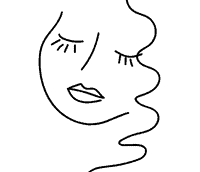
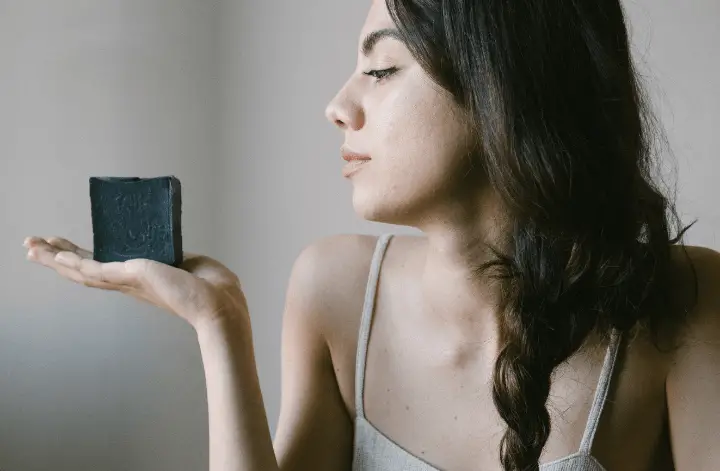
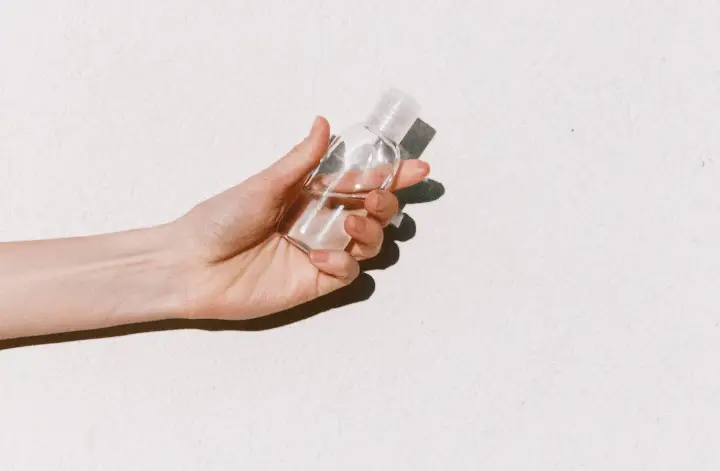
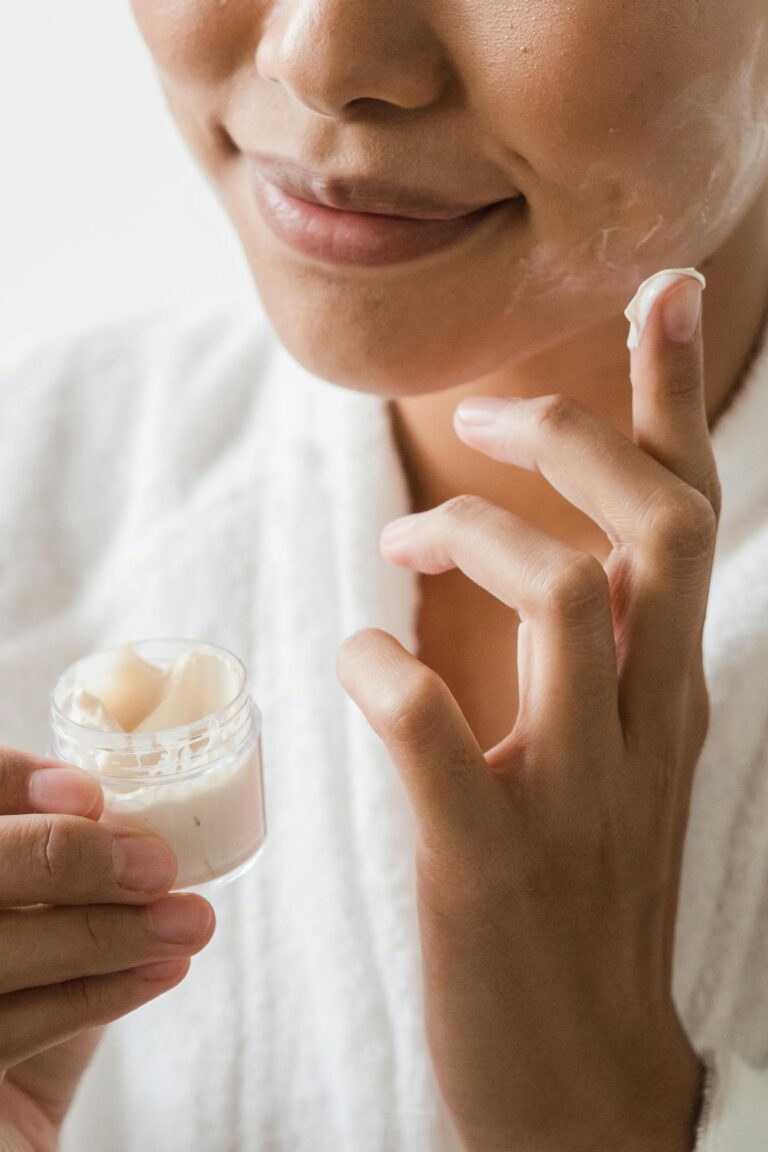
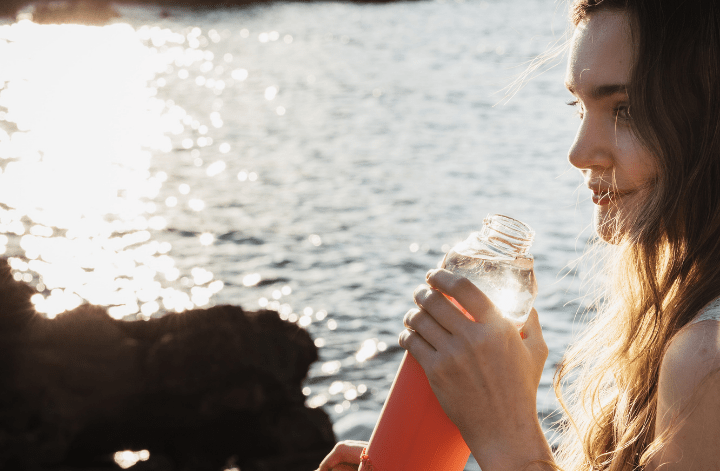

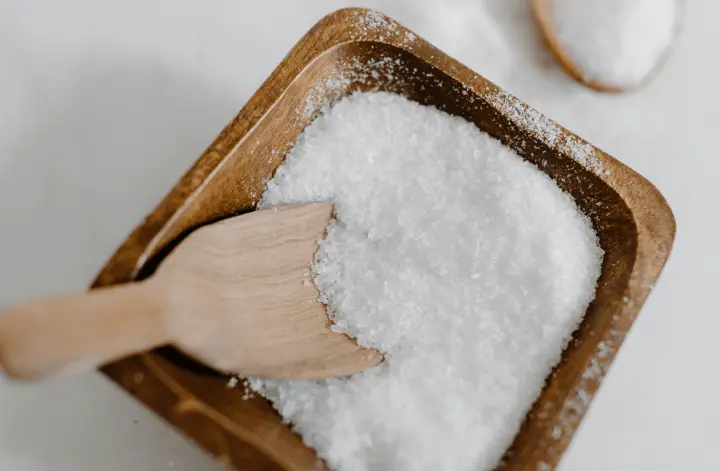
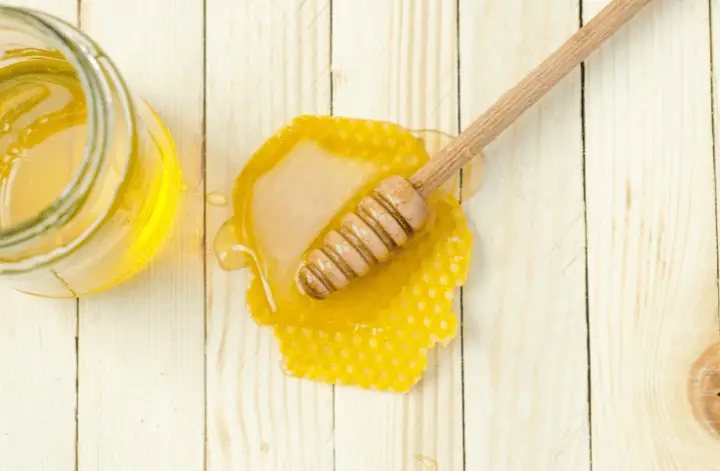

Hi.
Thanks for the helpful hints! Do you have a suggestion for a hair spray to cut down on static? I’m trying to find a balance with acv and water but some days the dry climate is too much. An acv/water leave in? Thank you!
Hi there!
Well, the vinegar-water rinse mentioned in the post is basically that – a leave-in conditioner.
You can start with 1 part vinegar to 7 or 8 parts water. If the hair seems too frizzy or dry, it means you probably don’t have enough vinegar. Add some more for the next rinse and try again. A higher vinegar ratio will give the hair a more slick feel.
You could also try a few drops of jojoba oil, rubbed between your palms and applied to the top of your hair, where the fuzzies are. Jojoba is very light (similar to sebum) and it might help you with this as well.